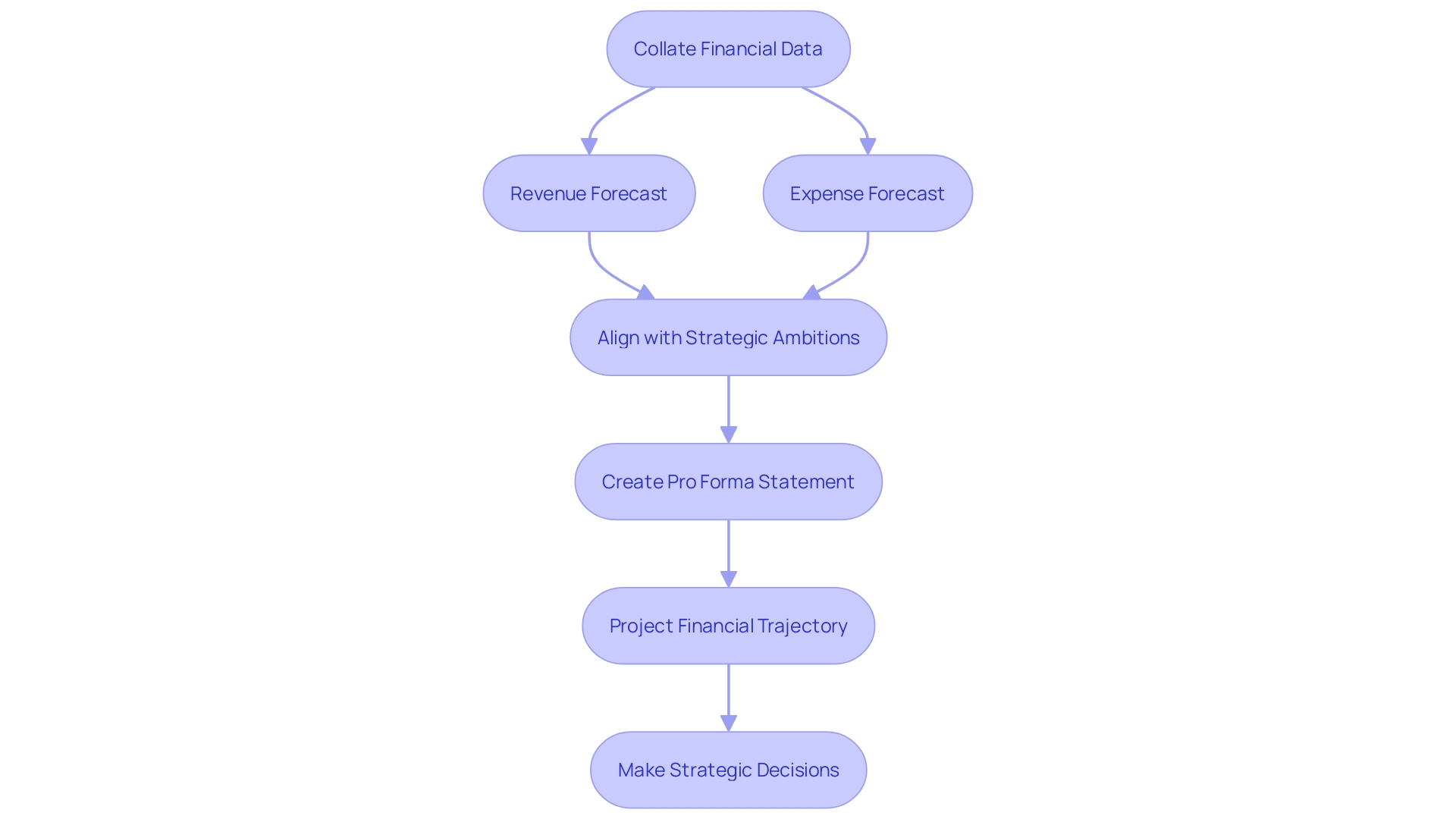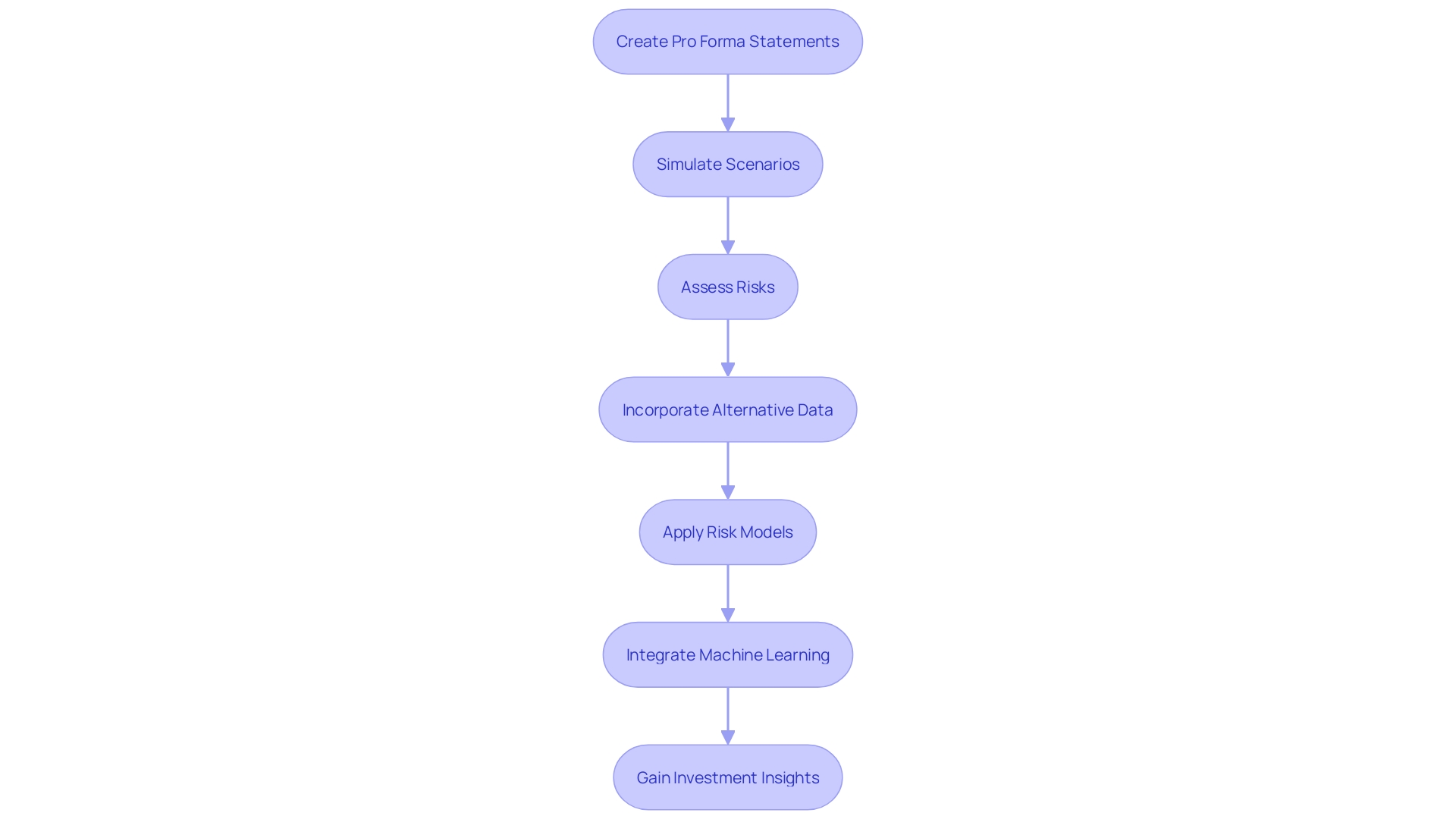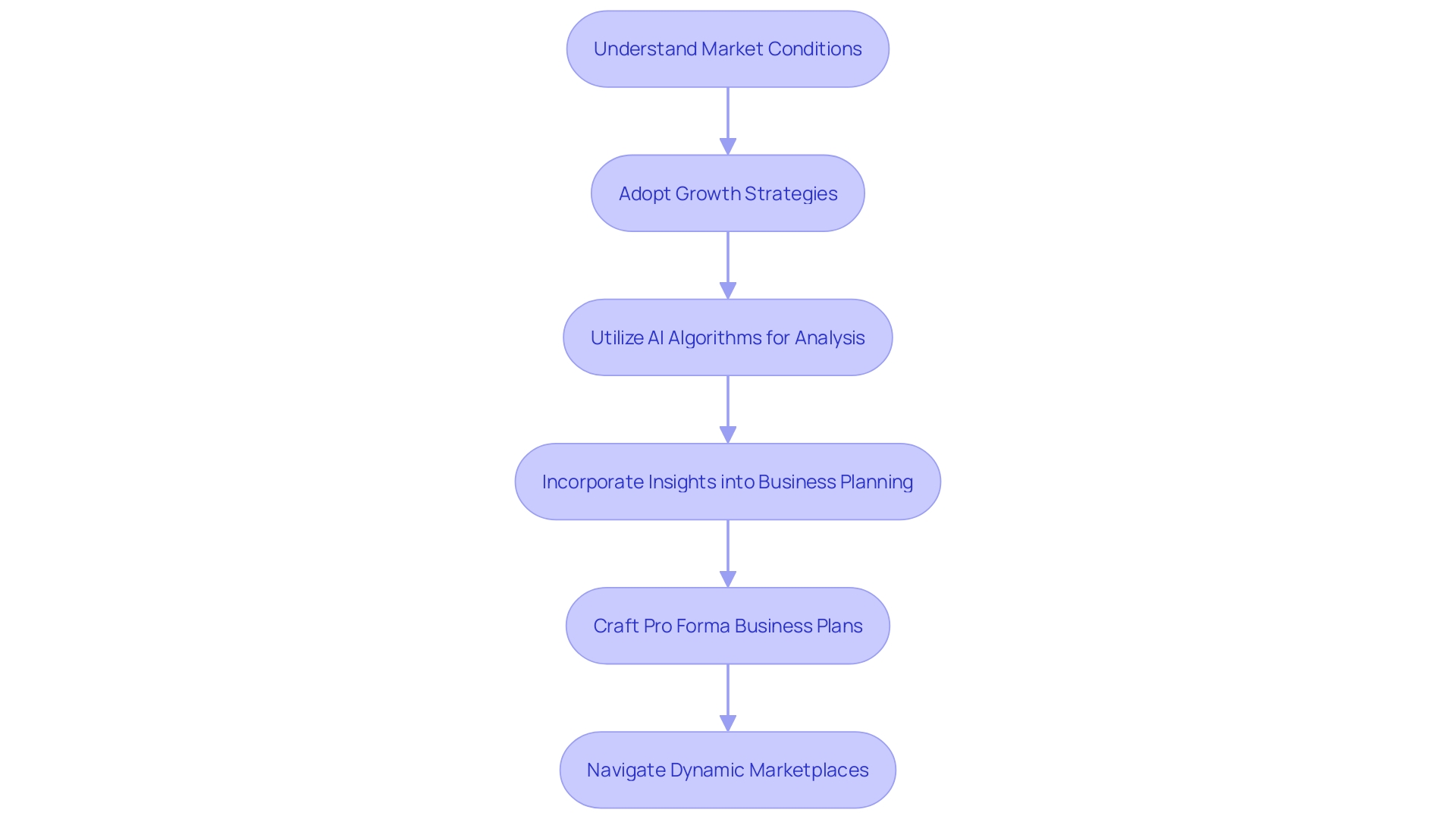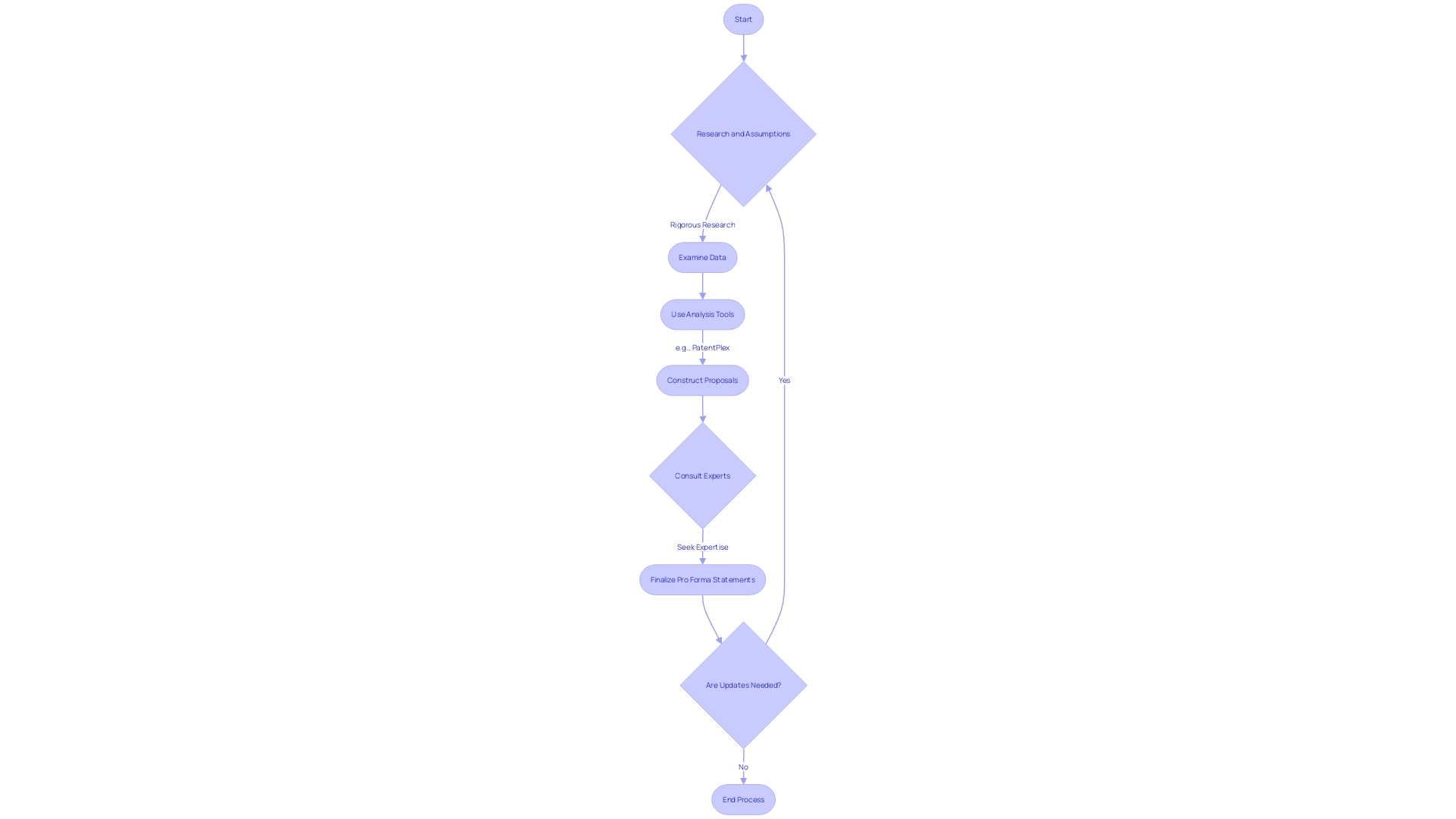Introduction
Pro Forma financial statements and business planning are indispensable tools that provide deep insights into a company's fiscal forecasts, empowering strategic decision-making. These financial documents, such as cash flow statements and statements of change in equity, offer a clear picture of a company's cash management and financial health. They are not only crucial for internal use but also play a critical role in communicating with external stakeholders.
In a dynamic business environment, where innovation and revenue management are paramount, the application of meticulous Pro Forma financial statements and business planning is more relevant than ever. This article explores the importance of Pro Forma in business planning, key components of a Pro Forma document, types of Pro Forma financial statements, and best practices for creating accurate Pro Forma statements. Additionally, it delves into how Pro Formas can be used for sensitivity analysis and risk management, as well as their integration into overall business strategy.
By understanding the significance of Pro Forma and adopting strategic forecasting, businesses can navigate market complexities and position themselves for success.
Understanding the Importance of Pro Forma in Business Planning
Pro Forma financial statements, budgets, and business plans are indispensable tools that render a crystal-clear picture of a company's fiscal forecasts, empowering strategic decision-making. For instance, a business like John Dee navigated substantial growth by meticulously analyzing current operations and future needs, which underpinned their multi-staged upgrade process. This process included developing several design concepts after a thorough analysis of their unique business requirements, ensuring the solutions were perfectly tailored to their evolving business landscape.
The importance of such financial documents cannot be overstated, as they provide deep insights into a company's cash management. A cash flow statement, for example, details all cash inflows and outflows, revealing whether a company is self-sustaining or dependent on external financing. This is crucial for maintaining operational efficiency and financial health. Similarly, the statement of change in equity, or the statement of retained earnings, sheds light on the financial decisions affecting shareholder value, encapsulating elements like net profits or losses and dividend distributions.
Beyond internal use, these financial tools are also critical for communicating with external stakeholders. As John Hart, owner of John Dee Warwick, and Soeren Schauki, Business Development Manager at Dematic, found, manual operations became inadequate for their expanding business, automation provided the necessary visibility and efficiency. By leveraging Pro Forma statements and comprehensive planning, they managed to address the unique challenges of their industry, such as product tracking and safety.
In a dynamic business environment, where entities like Strategic Solution Partners offer innovative problem-solving and revenue management, the application of meticulous Pro Forma financial statements and business planning is more relevant than ever. Such strategic foresight is exemplified by the first transatlantic flight powered by alternative fuels, showcasing the impact of forward-thinking in business operations. Similarly, understanding customer value, a principle underscored by accounting experts, forms the bedrock of profitable and sustainable business models.
Key Components of a Pro Forma Document
Pro Forma financial statements are more than cursory projections; they are a meticulous blueprint of a company's financial future. They comprise several elements, each playing a pivotal role in painting an accurate financial forecast. One such element is the expense budget, which lays out all costs associated with a project. This encompasses direct production costs, as well as indirect expenses like insurance and taxes, providing a comprehensive view of the financial undertaking.
A project proposal is another key component, delineating the project's scope, objectives, and required resources. It serves as a foundational document that guides decision-making and sets the stage for successful project execution.
The cash flow statement is a vital part of Pro Forma documents, detailing the ebb and flow of cash within the business. It is a reflection of a company's operational efficiency, capturing all cash inflows from daily operations to investments, and outflows covering business activities. As one expert remarked, 'It captures all cash inflows, from everyday operations to external investment sources, and all outflows, including those that cover various business activities and investments. By examining this statement, one can understand if a company is generating enough cash from its operations or relying on external financing.'
Furthermore, the statement of change in equity is an essential segment, offering a transparent look into the shifts in a company's equity. Also known as the statement of retained earnings, it highlights the financial decisions affecting shareholder value, such as net profits or losses and dividend distributions.
Incorporating these components into a Pro Forma document ensures a robust and realistic financial forecast, one that stakeholders can rely on for making informed decisions. Recent investor testing and legislative directives, such as those outlined in the Consolidated Appropriations Act, 2023, underscore the importance of such detailed and transparent financial reporting. These efforts aim to provide investors with the necessary information to make educated investment choices, reflecting an industry-wide push for clarity and comprehensiveness in financial documentation.
Types of Pro Forma Financial Statements
Pro Forma financial statements are indispensable tools in the arena of business planning, each tailored to provide unique insights into different aspects of a company's financial trajectory. The Pro Forma income statement, for instance, offers a forward-looking projection of a company's revenue and expenses, giving stakeholders a glimpse of potential profitability. It's a roadmap that delineates expected sales revenue and operating expenses, essential for strategizing future growth.
The balance sheet, another critical Pro Forma statement, presents a snapshot of the company's financial position at a given point in time, detailing assets, liabilities, and shareholders' equity. This statement is pivotal for understanding the liquidity and capital structure of a business, informing decisions on asset management and debt financing.
A cornerstone of financial analysis is the Pro Forma cash flow statement. It meticulously tracks the flow of cash into and out of the business, encompassing operational activities, investment transactions, and financing arrangements. This document is vital for assessing the company's ability to generate cash organically and manage its financial obligations, offering a transparent view of liquidity and long-term viability.
Additionally, the statement of change in equity, or statement of retained earnings, delves into changes in a company's equity over time. It breaks down the impact of net profits, losses, and dividend distributions, providing a window into decisions affecting shareholder value.
Together, these Pro Forma financial statements form a comprehensive suite that enables meticulous financial planning and analysis. They serve as the linchpin for stakeholders, including financial analysts and investors, to evaluate the company's potential and make informed decisions aligned with long-term strategic goals. By adhering to international financial reporting standards and generally accepted accounting principles, these documents maintain a high standard of accuracy and transparency, solidifying their role as a cornerstone of effective business planning.
How to Create a Pro Forma Statement
To craft a Pro Forma financial statement, meticulous planning and a deep dive into financial specifics are imperative. Start by collating necessary financial data, which serves as the foundation for your Pro Forma statement. Next, undertake a thorough revenue and expense forecast, ensuring adherence to realistic and data-driven expectations. It's crucial to align these projections with the strategic ambitions of your company, thus reflecting a true picture of your expected financial standing. This approach not only equips you to project a clear financial trajectory but also positions you to make strategic decisions backed by solid financial foresight.

Using Pro Formas for Sensitivity Analysis and Risk Management
Pro Forma financial statements are versatile tools that extend beyond mere forecasting. They are instrumental in sensitivity analyses, allowing CFOs to evaluate the influence of varying factors on financial outcomes. By simulating different scenarios, Pro Formas enable the exploration of a range of outcomes based on distinct variables, aiding in the anticipation of potential risks and the formulation of mitigation strategies. This proactive approach can be likened to the strategy employed by utilities in California to manage wildfire risks, which involves a complex interplay of risk assessment, regulatory compliance, and public relations. Just as these utilities analyze uncertain risk levels and the effectiveness of their mitigation strategies, financial leaders can use Pro Formas to navigate the uncertainties of market conditions and investment portfolios.
By applying risk models, such as historical or stress models, and incorporating alternative data, CFOs can gain a more nuanced understanding of potential financial volatility. The use of machine learning algorithms can further enhance this analysis, offering deeper insights into the safety and effectiveness of investment strategies. For instance, the integration of alternative data into investment decision-making can be a lengthy process, requiring a cultural shift and cross-functional collaboration. However, it is vital for staying ahead in competitive markets and ensuring robust risk management practices.
As the financial landscape evolves, it's crucial to remain vigilant and informed. Understanding the underlying causes of past financial crises can prepare us for future challenges. This means continuously refining our risk assessment tools and being prepared to question established norms. In doing so, we not only safeguard our financial stability but also position ourselves to capitalize on emerging opportunities.

Mitigating Risks Through Strategic Forecasting
Strategic forecasting stands at the heart of crafting Pro Forma business plans, serving as a compass for navigating future market conditions. It requires a deep understanding of shifting socio-cultural, economic, and technological landscapes, enabling businesses to not only anticipate but also shape their future. For instance, by adopting an Optimize Sales strategy followed by Customer Base Penetration, companies can carve successful growth paths like enhancing customer experience—a move that's essential in an era where quality interactions with products and services significantly impact customer sentiment and, ultimately, business success.
In essence, strategic forecasting is about predicting potential future scenarios. It involves detailed analysis, often supported by advanced tools such as AI algorithms, which have been shown to reduce errors and often surpass expert human predictions in accuracy. This is particularly useful when applied to demand and growth forecasting, which can inform critical decisions and strategies.
Furthermore, strategic forecasting feeds into both budgeting and forecasting activities, which, while related, serve distinct functions. Budgeting sets financial objectives for a specific period, while forecasting uses data to predict future business performance, aiding in setting and adjusting budgets over time. It's a cyclical process that starts with defining the forecast's purpose, collecting financial data, choosing a time frame and method, and culminating in analysis—either manually or via financial forecasting software.
By harnessing strategic forecasting, businesses can create robust contingency plans, mitigating the impacts of unforeseen events. It's a process underscored by the need for foresight, as illustrated by the rise of e-commerce and the downfall of businesses that failed to adapt. This cautionary tale serves as a reminder of the critical role foresight plays in customer experience and business longevity.
Incorporating these insights into business planning is not just beneficial but essential for maintaining and steering the growth trajectory of a company. The evolving business analysis landscape, as indicated by a survey of over 4,400 professionals, points to the importance of understanding current industry trends to effectively tackle upcoming challenges. Armed with strategic forecasting, businesses are better equipped to navigate the complexity of today's dynamic marketplaces.

Integrating Pro Forma into Overall Business Strategy
Pro Forma financial statements are more than just predictive metrics; they serve as a compass that guides the financial course of a business, ensuring that every financial decision is aligned with the company's broader strategic goals. For instance, when Somerset Academies of Texas was experiencing growth, they realized the need to streamline processes and integrate their disparate systems to support their educational mission. Similarly, Comwell Hotels faced the challenge of modernizing their management systems to meet the evolving demands for digitization and sustainability in the hospitality industry. Both cases illustrate the importance of having financial plans that are not only comprehensive but also integrated with the strategic vision of the organization.
- A cash flow statement is a vital component of this integration, revealing whether a company's operations generate sufficient cash or if it relies on external financing. This insight is pivotal for operational efficiency and financial health.
- Analyzing the statement of changes in equity, or the statement of retained earnings, provides a window into the financial decisions affecting shareholder value, such as net profits, losses, and dividend distributions.
As the role of the COO witnesses a resurgence, CFOs are increasingly expected to have a granular understanding of their company's operations to foster growth and efficiency. This emphasizes the need to link every innovation effort to strategic growth priorities and the firm's unique advantages.
For example, the integration of alternative data into the investment decision-making process is not solely a technological upgrade but a cultural shift, requiring a comprehensive understanding across all functions of the business. This approach ensures that financial tools and strategies support the organization's objectives, driving value maximization.
Ultimately, Pro Forma financial statements and business plans are not standalone documents but are integral components of a strategic framework that propels a company towards its envisioned future, with every financial decision purposefully contributing to the organization's value and growth.
Best Practices for Creating Accurate Pro Forma Statements
To construct Pro Forma financial statements that truly reflect future financial scenarios, it's imperative to integrate rigorous research, grounded assumptions, and continual refinement. The process begins with a comprehensive examination of the relevant data, similar to how John Monocello of GTC Law Group assesses patent portfolios for high-stakes transactions. Monocello's methodical approach, utilizing tools like PatentPlex to analyze patent family trees, mirrors the detailed analysis needed in Pro Forma preparations.
Embracing realistic projections is akin to the detailed construction proposals described, which encompass every facet of a project from materials to timelines. This level of detail is crucial in ensuring the Pro Forma statements are both believable and valuable. Expert consultations can further refine these statements, much like legal professionals meticulously draft documents to effectively communicate and persuade.
Finally, the dynamic nature of markets demands that Pro Forma statements are not static documents but are subject to regular updates. This reflects the evolving disclosure requirements for financial instruments, such as the recent legislative changes affecting Retail Indexed-Linked Annuities (RILAs), ensuring that information remains current and relevant. By adhering to these best practices, financial leaders can create Pro Forma statements that serve as robust tools for forecasting and decision-making.

Updating and Refreshing Pro Forma Budgets
Maintaining the accuracy and relevance of Pro Forma budgets is an ongoing process, necessitating regular updates and refinements. This involves a meticulous approach to tracking actual performance against projected figures, assimilating new data and insights, and revising the budgets to accurately reflect shifts in the business environment.
For instance, consider the Ford Foundation's initiative to revamp their content management system to meet the demands of their growing digital content output. This exemplifies the importance of adapting to new workflows and integrating fresh insights—practices just as crucial when updating Pro Forma budgets. Similarly, Somerset Academies of Texas' integration of various software systems into a cohesive solution underscores the value of streamlining processes, a concept that extends to financial planning.
Moreover, in the fast-paced business world, where the standard for direct experience is escalating as highlighted by recent hiring trends, it's essential to keep Pro Forma budgets dynamic. They should not only incorporate historical data but also anticipate future conditions, thereby acting as a navigational tool for financial foresight. As Jurgen Appelo aptly puts it, static annual budgets are an outdated notion in today's rapidly changing business landscapes.
A robust budget update should also consider customer feedback, as suggested by industry leaders, to ensure that it aligns with customer values and contributes to profitability. Data serves as the backbone of informed decision-making, offering clarity and guiding budget adjustments to optimize operations.
Access to comprehensive datasets, like those available in the SEC's EDGAR system, can support the refinement of budgets by providing insights into industry trends, company performance, and regulatory compliance. In crafting a forward-looking Pro Forma budget, it's critical to leverage such resources to inform strategic financial planning and make data-driven adjustments that reflect the evolving marketplace.

Conclusion
Pro Forma financial statements and business planning are essential tools for strategic decision-making. They provide deep insights into a company's fiscal forecasts, cash management, and financial health. In today's dynamic business environment, the application of meticulous Pro Forma financial statements and business planning is more relevant than ever.
Key components of a Pro Forma document include the expense budget, project proposal, cash flow statement, and statement of change in equity. These elements work together to create accurate financial forecasts and ensure transparency in financial reporting.
Pro Forma financial statements come in different types, such as the income statement, balance sheet, cash flow statement, and statement of change in equity. Each statement offers unique insights into different aspects of a company's financial trajectory.
Creating accurate Pro Forma statements requires meticulous planning and deep dives into financial specifics. It's crucial to integrate realistic projections aligned with the company's strategic ambitions.
Pro Forma financial statements are versatile tools that go beyond forecasting. They can be used for sensitivity analysis and risk management, allowing CFOs to evaluate the influence of different factors on financial outcomes and anticipate potential risks.
Integrating Pro Forma financial statements into overall business strategy ensures that every financial decision aligns with the company's broader strategic goals. They serve as a compass that guides the financial course of a business, driving value maximization and positioning the company for success.
Creating accurate Pro Forma statements requires rigorous research, grounded assumptions, and continual refinement. Expert consultations and regular updates are essential to maintaining the accuracy and relevance of Pro Forma budgets.
In conclusion, Pro Forma financial statements and business planning are powerful tools for strategic decision-making. By understanding their importance, incorporating best practices, and integrating them into overall business strategy, companies can navigate market complexities and position themselves for success. With meticulous forecasting and a proactive approach to risk management, businesses can thrive in today's dynamic business landscape.




